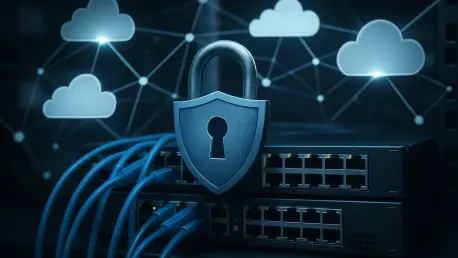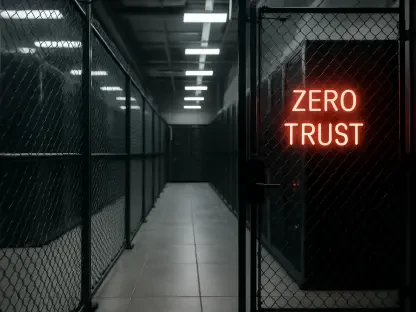Setting the Stage: The Rising Stakes of Cybersecurity in Hybrid Environments
In an era where cyber threats strike with alarming frequency, a staggering statistic reveals the urgency: over 80% of organizations with hybrid networks—spanning on-premises and cloud setups—report at least one significant breach annually. This vulnerability stems from the complexity of managing disparate systems, where a single oversight can expose critical data. Security Information and Event Management (SIEM) systems have emerged as a vital defense, offering centralized monitoring and real-time threat detection. This market analysis dives into the transformative role of SIEM in safeguarding hybrid networks, examining current trends, growth projections, and strategic implications for businesses navigating an increasingly hostile digital landscape. The purpose is to equip stakeholders with actionable insights into how this technology shapes cybersecurity investments and strategies.
Market Dynamics: Unpacking SIEM’s Growth and Adoption Trends
Enterprise Leadership and Expanding Market Reach
The SIEM market is witnessing robust growth, driven primarily by large enterprises that recognize the technology as indispensable for securing complex hybrid environments. Industry data indicates that these organizations account for over half of the market share, leveraging their substantial resources to implement sophisticated systems. Projections suggest a compound annual growth rate (CAGR) of 12% from 2025 to 2030, reflecting sustained demand as cyber risks escalate. High-profile sectors such as finance and healthcare, often prime targets for attackers due to sensitive data holdings, are leading adopters, prioritizing SIEM to mitigate ransomware and compliance violations.
Sectoral Vulnerabilities Driving Demand
Beyond enterprise dominance, specific industries underscore the urgent need for SIEM solutions. Academia, ranked as the third most-targeted sector for cyberattacks, faces unique challenges with sprawling networks across campuses and research hubs. The protection of intellectual property and student data necessitates robust monitoring, pushing universities to invest despite budget constraints. This trend highlights a broader market shift toward sector-specific SIEM configurations, where tailored solutions address distinct vulnerabilities, expanding the technology’s relevance across diverse fields.
Barriers to Entry for Smaller Players
Despite widespread interest, the SIEM market reveals a stark disparity in accessibility. Smaller organizations, lacking the financial capacity and skilled personnel of their larger counterparts, often struggle with the high upfront costs and intricate setups. The total cost of ownership remains a hurdle, with returns on investment potentially taking several years. This gap suggests an untapped opportunity for vendors to develop scaled-down or cloud-based SIEM offerings, potentially democratizing access and broadening the market base over time.
Operational Insights: Challenges Shaping Market Evolution
Navigating the Complexity of Implementation
A critical factor influencing the SIEM market is the operational complexity tied to deployment. Integrating data from an average of over 100 sources—ranging from firewalls to cloud platforms—requires meticulous configuration of correlation rules and alert thresholds. This process can strain IT teams, particularly in organizations with legacy systems that lack compatible logging capabilities. Vendors who streamline integration processes or offer managed services stand to gain a competitive edge, addressing a pain point that deters adoption among resource-constrained firms.
Alert Management as a Market Differentiator
Another pivotal challenge shaping market dynamics is the management of alerts. Poorly tuned SIEM systems risk overwhelming staff with false positives, leading to alert fatigue, or failing to flag critical threats if settings are too lax. This operational bottleneck drives demand for advanced features like automation and machine learning, which refine alert accuracy and reduce manual oversight. Solutions that prioritize actionable intelligence over raw data output are increasingly favored, positioning innovation in alert calibration as a key area for market growth.
Future Projections: Innovations Fueling SIEM’s Trajectory
Technological Advancements on the Horizon
Looking ahead, the SIEM market is poised for transformation through cutting-edge technologies. Integration with artificial intelligence promises to enhance threat detection by analyzing vast datasets for subtle anomalies, minimizing false positives, and automating responses such as endpoint isolation. Cloud-native SIEM solutions are also gaining traction for their scalability, although over 55% of deployments remain on-premises due to concerns over control and compatibility. These innovations signal a shift toward more agile and predictive security tools, likely spurring market expansion.
Regulatory Pressures and Market Opportunities
Evolving regulatory landscapes are another catalyst for SIEM adoption. Stricter data protection laws worldwide compel organizations to bolster compliance reporting, a core strength of SIEM platforms. This trend is expected to drive demand, particularly in regions with rigorous standards, creating opportunities for vendors to offer compliance-focused features. As cyber threats intensify, analysts anticipate SIEM becoming a standard across all organization sizes, supported by managed services that lower entry barriers for smaller players.
Competitive Landscape and Strategic Positioning
The competitive arena for SIEM vendors is heating up as market growth accelerates. Companies that invest in user-friendly interfaces, seamless integration with legacy systems, and cost-effective models will likely capture greater market share. Partnerships with cloud providers and cybersecurity firms can further enhance offerings, addressing the dual needs of scalability and expertise. As the market matures, differentiation through specialized solutions for niche sectors like academia or government could redefine competitive strategies, fostering innovation and customer loyalty.
Reflecting on the Market Journey: Strategic Takeaways
Looking back, this analysis of the SIEM market underscores its pivotal role in fortifying cybersecurity amid the challenges of hybrid networks. The robust growth trajectory, fueled by enterprise adoption and sectoral needs, paints a picture of a technology indispensable to modern defense strategies, despite hurdles like cost and complexity. Innovations in AI and cloud integration mark significant milestones in enhancing SIEM’s capabilities, while regulatory demands cement its relevance.
Moving forward, organizations should prioritize strategic planning to maximize SIEM’s potential, starting with clear use cases to justify investment and guide deployment. Exploring managed services or partnerships can alleviate operational burdens, especially for smaller entities. Continuous training and a focus on automation will be crucial to adapt to evolving threats and minimize human error. As the digital threat landscape grows ever more perilous, positioning SIEM as a core component of security infrastructure—through tailored solutions and vendor collaboration—offers a pathway to resilience in an uncertain future.









